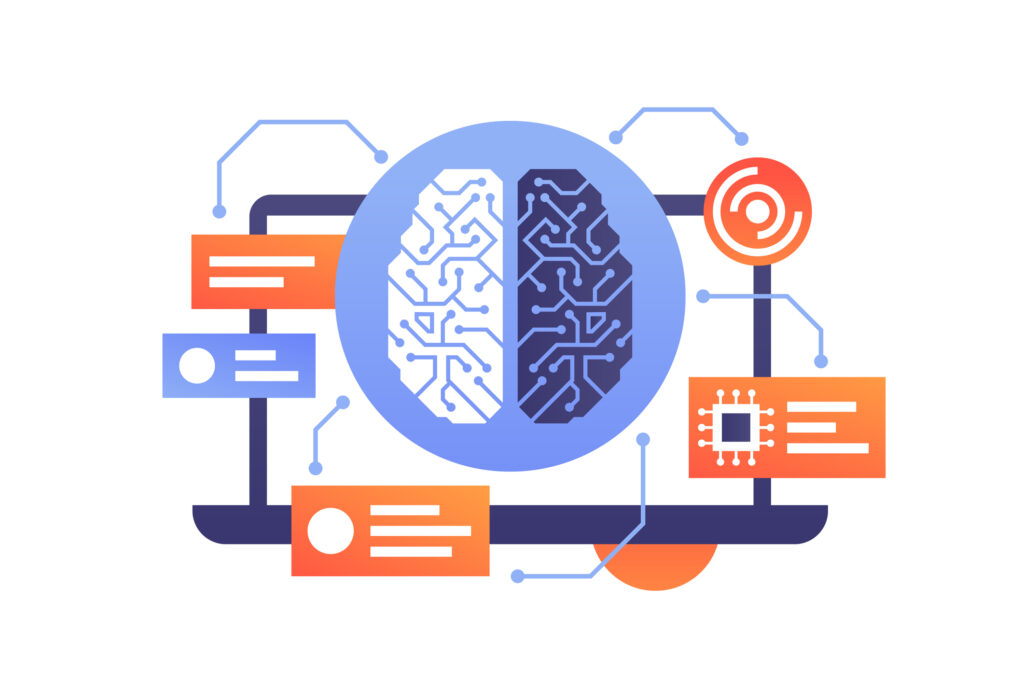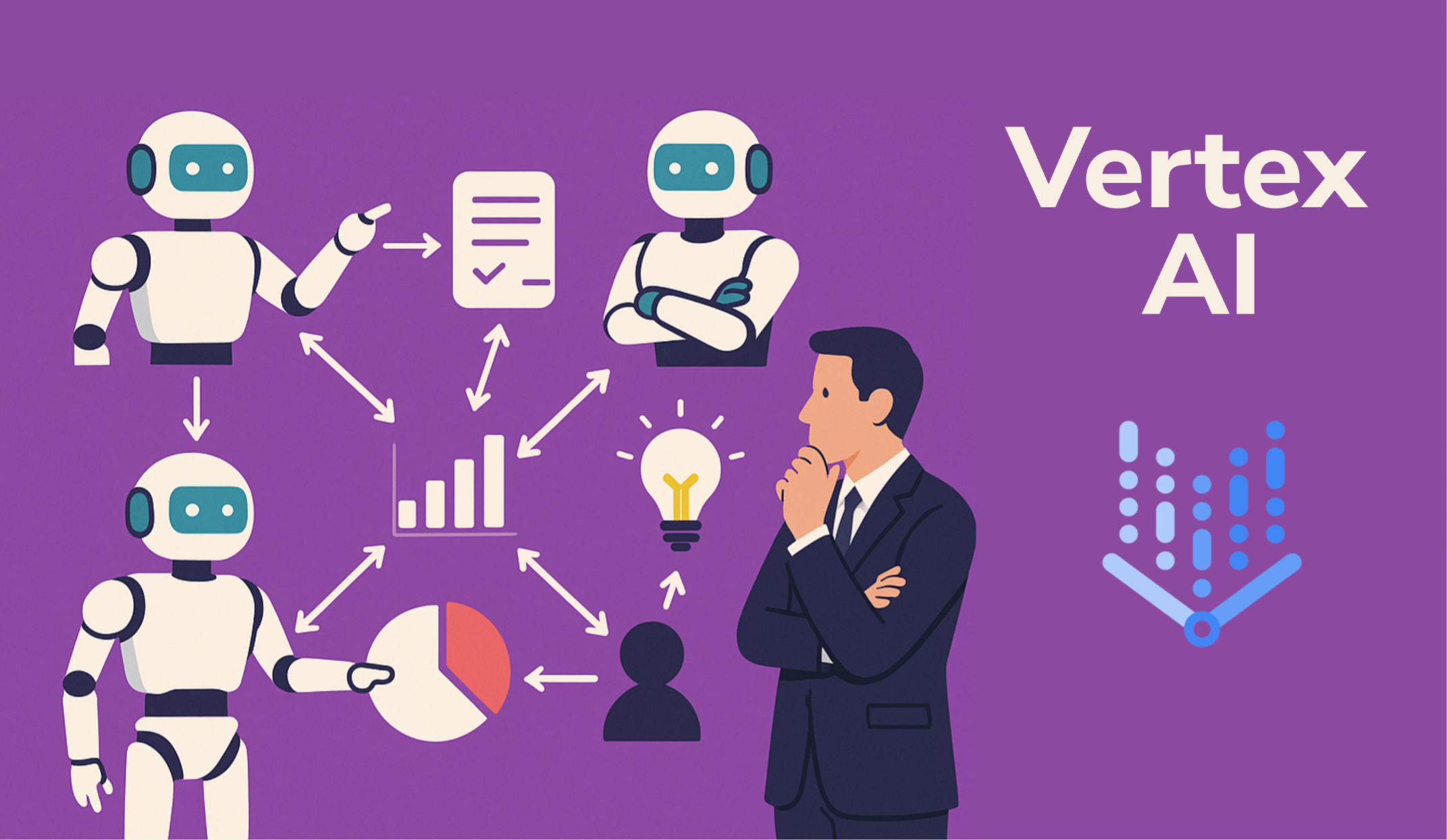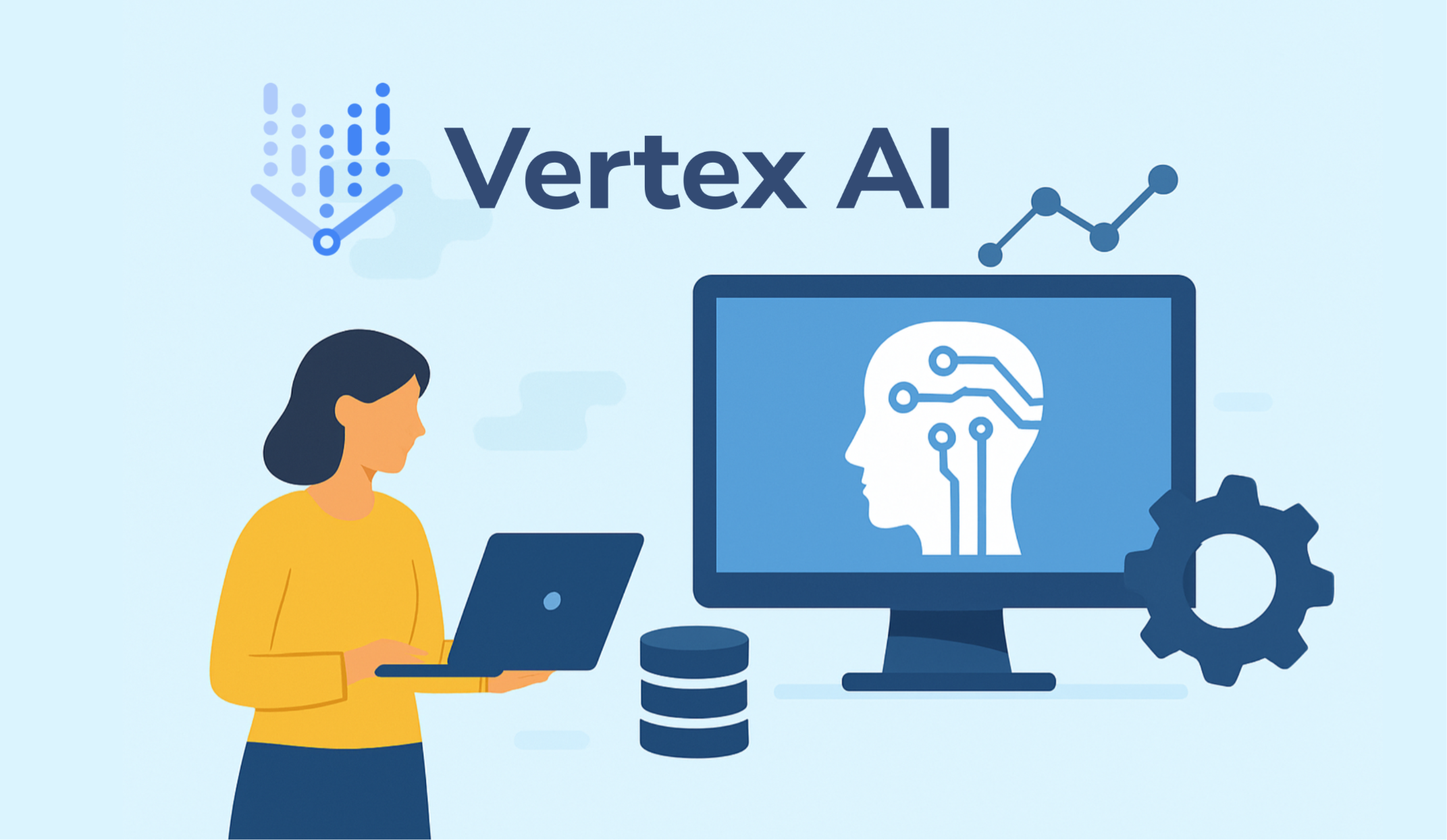Table of Content
- Machine Learning Models Introduction
- What is a Machine Learning Model?
- How to Build a Machine Learning Model
- Scalability of Machine Learning Models
- Machine Learning Model Monitoring
- ML Pipeline Automation
- Steps in Automating ML Model Training
- What is a Dataset in Machine Learning?
- Machine Learning Models in Python
- Challenges with Machine Learning Systems
- Machine Learning Model Development
- Conclusion
Successful enterprises differentiate themselves from competitors through Machine Learning (ML) and Artificial Intelligence (AI) applications.
Machine Learning Models Introduction
Businesses are incorporating machine learning models to scale and improve by running their operations with software and less human operations — creating controlled scenarios that perform with automatic learning and prediction to make decisions. ML models train data to feed algorithms specific to business activities and variables that change frequently and can impact business effectiveness.
Analysts start by identifying the business parts and complex problems that can be solved from data. Then, analyzing the responsiveness of uncontrolled variables to develop and incorporate AI-driven services to its core and scale business operations. Learn more about machine learning models and envision how to extend existing services or develop new solutions.
What is a Machine Learning Model?
A Machine learning model is a program that runs an algorithm on a dataset to recognize patterns to learn (train) and reason (logic) from that data to create a clear output (prediction).
The ML model training is done incrementally from the data and optimizes the algorithm to find patterns or signals. Framing Machine Learning problems can vary depending on the use case and prediction task. ML models are classified according to how they are trained and data points built to detect patterns.
Algorithms are the mathematical procedure used to find patterns in a dataset. Discovering the right algorithms is a key factor in developing ML models. Learn more about the types of algorithms.
How to Build a Machine Learning Model
Training a Machine Learning model means finding the parameters that will fit the training data when running the algorithm to make predictions.
- Problem Framing
The first step to developing an ML model is identifying the business case and success criteria. Once these are determined, a plan for achieving the project’s objectives can be created. - Identify and Extract Data
In this step, you need to explore and manage the quality and quantity of data. Therefore, understand how the model will work on real-world data and select and integrate data from several sources. Having good data is vital, as the model will learn from this data. - Model Naming
Select a name for your model. Add a description of the model. Attach appropriate tags to your model. (Tags are designed to make your model searchable.) - Data Analysis
Data analysis is a process that provides a clear understanding of the data and prepares the data to fit the characteristics of the model. Analyzing data helps identify the feature engineering for the ML model. Data preparation is automated for trying out combinations. - Collect and Prepare the Data
In this step, data from several sources is searched and divided (data splits) for training, test sets, and validation. Data has to be modified, assembled, cleaned, and labeled. Also, all duplicates must be removed and all errors corrected. (It’s worth writing functions specifically for this purpose.) - Select Your Machine Learning Algorithm
There are many models from which to choose, depending on the problem. This step includes algorithms of prediction, classification, clustering, deep learning, linear regression, and so on. Experiment with several models from various algorithm categories to find the best-performing model. Perform transformations and feature engineering. - Train Your Machine Model
The goal of training is to answer a question or make a prediction correctly as often as possible. This step involves training the datasets to operate smoothly. For example, algorithms and techniques are involved in training the machine model, such as training with hyperparameters to find the optimal. Also, the model training code is developed during this step. - Model Quality Evaluation
The evaluation step includes selecting the metrics and conducting the actual evaluation. In this step, you evaluate the machine models on the test set, run the pipeline to transform the data, cross-validation, anomaly detection, novelty detection, quality evaluation, etc. - Model Performance and Adjustment
Machine learning models are tested in real-life situations. Data is divided into training and test sets for testing purposes. The model is tested using the “test set” on new instances and checked for generalization errors to determine how the model is overfitting or underfitting the data. At this point, the model should be predicting and ready for deployment. - Launch, Monitor, and Maintain
Now, the model must be deployed to the production environment. ML models need to be monitored with humans or machines to check their performance in order to ensure an optimum data pipeline and data quality. This step involves confirming that the system works with current data and is set to trigger alerts if the model needs retraining.
Scalability of Machine Learning Models
In ML applications, scalability is often a primary concern. Businesses need applications that can maintain the same efficiency when the workload grows, updating to new data and producing predictions. For example, predictions in the stock market happen every millisecond. So, scalability requires building an effective data pipeline. These pipelines should be flexible enough to accommodate many data as well as the high processing velocity required by new ML applications.
Therefore, it is essential to make the Machine Learning infrastructure interoperable to incorporate it into the existing and future resources. For this, we need to set up scalable ML applications to increase the systems’ overall performance. Scalable ML algorithms are a class of algorithms that can deal with any amount of data without consuming a tremendous number of resources, such as memory. The primary purpose of scalable algorithms is to allow fast computations for massive data sets.
ML Model Training
The task: Develop an ML training pipeline that describes ML workflows for each ML model and keeps a repository for each model candidate.
Completing this task will involve a number of steps:
- Choosing the proper framework and language: ML-based applications can use programming languages such as Python, C++, JavaScript, Java, C#, Julia, Shell, R, TypeScript, and Scala. Python is the most recommended programming language for ML applications. The language can be chosen depending on frameworks, such as TensorFlow, PyTorch, SciKit-Learn, MXNet, Gluon, Sonnet, and Keras. All these frameworks have numerous features. A deep learning framework allows building learning models that are production-ready without getting into the underlying algorithms of the details. Choosing the proper framework that will support your preferred programming language is essential.
- Selecting a suitable processor: Selecting the proper hardware plays a critical role in scalability. In many cases, for ML, the best CPU is a GPU (Graphical Processing Unit), as they are comparatively faster—and quicker in distributing computations across GPU servers. A traditional CPU (Central Processing Unit) is not ideal for large-scale machine learning. Beyond CPU and GPU, there are TPUs (Tensor Processing Units), Google’s custom-developed application-specific integrated circuits, which are used to accelerate machine learning workloads.
- Data collection: Data collection is the process of gathering and measuring data that needs to be formatted, cleansed, reduced, and rescaled to make it better. Data storage is also essential in order to develop solutions for the business problem at hand.
- The Input Pipeline: Data is entered into the learning algorithm as a set of inputs/pipelines. At this stage, the data can be divided (data segregation) into subsets and components, transformed, and then fed it into the system. The data set is then added to the pipeline. Data processing components are self-contained and usually run asynchronously.
- Model Training: A significant step for scalability, model training includes exploring and cleaning the data as well as engineering new features. Training the model means learning good values for all the weights and the bias from labeled examples.
Steps include:- Inputting training data source
- Naming the data attribute that contains the target to be predicted
- Preparing data transformation instructions
- Training parameters to control the learning algorithm
- Writing a script that runs automatically to train the model
- Testing and validation
Parameters in Machine Learning:
- Model parameters—set parameters for the model to fit the training set
- Hyperparameters training (write scripts)
- Model Scoring
- Optimization: The final step is to optimize. To achieve that, optimal parameters must be identified. Optimization algorithms check the input parameter to a function that results in the minimum or maximum output. Evaluation of data performance provides estimates on how the model is overfitting or underfitting the training data.
- Machine Learning overfitting happens when the model is too complex and doesn’t perform correctly with the training data, giving generalization errors during the validation set. The ML team should find a balance between bias and variances.
- Machine Learning underfitting is when the model is too simple for the intended dataset and predictions are inaccurate. The model needs additional parameters or, perhaps, more parameters should be added to the features of the algorithm.
- Testing Model: Before the final deployment happens, it is necessary to test whether the input data is in line with the output data and is yielding maximum predictions. These tests—cross-validation, error analysis, and data validation—should be done and monitored multiple times.
- Machine Learning Model Monitoring: The model monitoring phase ensures active performance monitoring to catch errors in production, detect degradation, and ensure consistency of inference data and metrics with business objectives. Monitoring code checks live performance of the models.
- Deploy ML Model: Deployment is when the prediction service goes live. Effectively deploying Machine Learning models is an art rather than a science. Think of deploying frequent model versions of the entire ML system. Cloud hosting platforms are ideal for this purpose. Models can be deployed as a web service and used by web applications that use REST API, deployed as an API for prediction, or containerized. Deploying a model on the cloud using Google AI Cloud Platform provides scalability and load balancing with a perfect environment for running TensorFlow models.
Machine Learning Model Monitoring
Building and managing an integrated ML system that is continuously in production.
This process refers to the performance monitoring of ML models to be consumed by business applications. In simple terms, monitoring refers to how the designed and developed models will keep running so that those functions or applications that integrate continue to perform with a high level of accuracy and stability.
Operationalization and managing ML models are complex tasks that require maintaining and continuously testing and validating the code, data, and models, managing performance and experiments, and maintaining the accuracy of the algorithms and data to avoid degradation of the models.
A model’s success depends on data collection, data engineering, and data science, which means collecting the correct data, understanding the effort needed to extract data from the system, and applying the engineering principles necessary to format, transform, and get the data ready from a data science standpoint. All three lead to the deployment of data.
ML Pipeline Automation
Machine Learning systems usually create a multistep pipeline that trains and validates models manually. Still, once your team learns and develops a workable model, the ML pipeline matures and must be automated. Automation speeds up new model training and implementations.
An ML development and operations culture (MLOps) is needed in order to solve the challenges involved in keeping the ML systems in production continuously. DevOps teams evolve to integrate all the elements with the CI/CD environment in order to automate the building, testing, and deployment of ML pipelines.
Continuous training (CT) automation and experimentation in model architecture, feature engineering, and tuning hyperparameters are then added to the operations.
Steps in Automating ML Model Training
- Evaluation
Analyze how to automate the steps of the ML training pipeline to achieve continuous training models from new data for faster iteration and readiness. - Exploratory Data Analysis (EDA)
Data analysis is a manual step to understand the data for building the model before making assumptions. (The model analysis is also a manual task.) - Build and Test
Try algorithms and models and develop the source code for the ML pipeline steps to automate. Build, test, and package components. Source code is sent to the repository. Many types of testing and verifications are performed on the training models. - Modular Components
Components, code, packages, artifacts, and executables are shared for reusability. - Automated Data Validation
Ensures that the expected data behaviors, patterns, and expected features comply with data schema. (Watch trigger alerts.) - Automated Model Validation
With the trained model, test a dataset to verify the quality of the prediction results, checking the values of the variances. Validation is performed offline, and then online validation is handled with canary deployment. - ML Metadata
Metadata is stored when the ML pipeline is executed; the metadata is then used to compare versions during model validation. This process also helps in evaluating metrics, debugging errors, and finding anomalies. - Triggers
Monitoring code is written to check the ML system’s performance and trigger response alerts when detecting changes in data that feed the training model. - Feature Store
A feature store is a repository of features for training and serving that allows the reuse of feature sets with metadata that can be fetched automatically in a batch to the prediction service. - Verify the Integration and Deploy
Verify that configurations are correct for integrating with the target environment (APIs, REST API, etc.) and deploy artifacts. Before deploying, check resources and IT infrastructure. - Schedule Automatic Execution
The trained model is pushed to the registry. - Prediction Service Model
The model is deployed and working with live data. - Continuous Monitoring
Apply continuous testing and verifications to validate and ensure performance.
The process of automating Machine Learning pipelines involves the gradual transition from manual to semi-automated to fully automated. Navigating the timeline for testing and deploying implementations includes a number of different skills and processes.
What is a Dataset in Machine Learning?
A dataset is a synchronized collection of data. It can be in the form of a table, a schema, or an object.
This process is, once again, an integral part of the Machine Learning process. In simple terms, the word “datasets” means a collection of data. You can usually find a dataset in a tabular form. Each column denotes a specific variable, and each row signifies a specific member of the dataset.
Types of Datasets
There are typically five types of datasets:
- Numerical Dataset
A numerical dataset consists of only the numbers—for example, the height and weight of a person, the total number of pages in a notebook, the number of apples in a grocery store, etc. - Correlation Dataset
This type denotes the relationship of variables or attributes between datasets. For example, people that exercise regularly have lower cholesterol levels. - Multivariate Dataset
This dataset consists of multiple variables, such as the length, width, and height of a rectangular box, for example. - Categorical Dataset
This type of dataset consists of the characteristics of a defined object or person, such as an individual’s gender and relationship status, for example. - Bivariate Dataset
This type consists of two variables, such as students’ academic scores and their ages, for example.
Datasets are updated regularly. The most significant benefit of using a dataset is that it helps the user obtain desired data in an organized manner, retrieving the required information quickly from a massive collection of data, thereby saving time and executing tasks more quickly.
Machine Learning Models in Python
Python is particularly suitable for building Machine Learning models and applications. Intuitive and easy to read, it is supported by an extensive collection of ML libraries and frameworks. Get started and learn how to train a machine learning model in Python.
- Get Started Learning Python
- The Python Tutorial
- Python Libraries (NumPy, Pandas, Matplotlib, etc.)
Python Frameworks
Production-ready Python frameworks include:
Challenges with Machine Learning Systems
- Requires continuous testing and validation of data and models
- Needs to integrate external solutions to the ML pipeline
- Model analysis and retraining of candidate ML model
- MLOps culture implementation throughout the machine learning development lifecycle
- Process and metadata management
- Automate the steps of building the ML model
- Data collection and verification
- Retraining models due to degradation or decay (tracking statistics and looking for emerging patterns)
- Tracking experiments to reproduce and reuse during the lifecycle
Machine Learning Model Development
You can build and deploy ML models and manage your Machine Learning operations (MLOps) with a collaborative partnership with Krasamo. Our expert teams can implement your ML operations through third-party services such as AWS or Google. This modality simplifies and helps manage your workflows, thereby avoiding infrastructure management tasks.
- Build ML pipeline using TensorFlow
- Evaluate and monitor model performance
- Metadata management (metadata tracking)
- Track artifacts and lineage
- Collaboration capabilities
- Feature engineering
- Track data and performance (notifications)
Conclusion
Machine learning has become an integral part of business operations in the digital age, together with large amounts of data and computing power. Have you been wondering how to power your products and features through Machine Learning? Or how to transform your business in disruptive environments? Machine Learning is particularly suitable for products that require solving complex problems and typically demand high human involvement for fine-tuning and analyzing large amounts of data.
Machine Learning can help product managers improve products and product offerings by mining data and using ML models to find new patterns from predictions that were previously unknown or difficult to see.
A successful Machine Learning strategy emphasizes business issues to solve, builds a business case, and puts users at the center while applying the relevant technical aspects to the project. Want to add Machine Learning to your data? Or discover which Machine Learning algorithm to use? Or perform an ML model training simulation? Krasamo has a team with expertise in Machine Learning models ready to meet your requirements.












I just had to give you props on this outstanding blog post! You’ve done an amazing job breaking down the nuances of ML models & ml algorithms – super informative and engaging, kudos!!
I totally relate to this post! I worked on a proj where we used machine learning models to predict customer churn for a telco company. As a machine learning consulting gig, we had to fine-tune the models and analyze huge datasets. It was a game-changer for their business!
I gotta say, this is one well-written post! You break down the ML pipeline process in a clear and concise manner that’s easy to follow. Your explanation on feature stores and continuous monitoring is spot on, especially when it comes to integrating machine learning models with external APIs. The gradual transition from manual to fully automated pipelines is also something I’ve been studying, so kudos for tackling that topic! Good job!